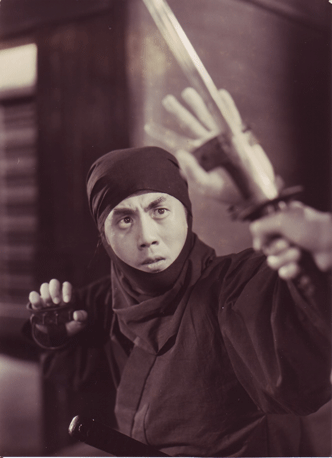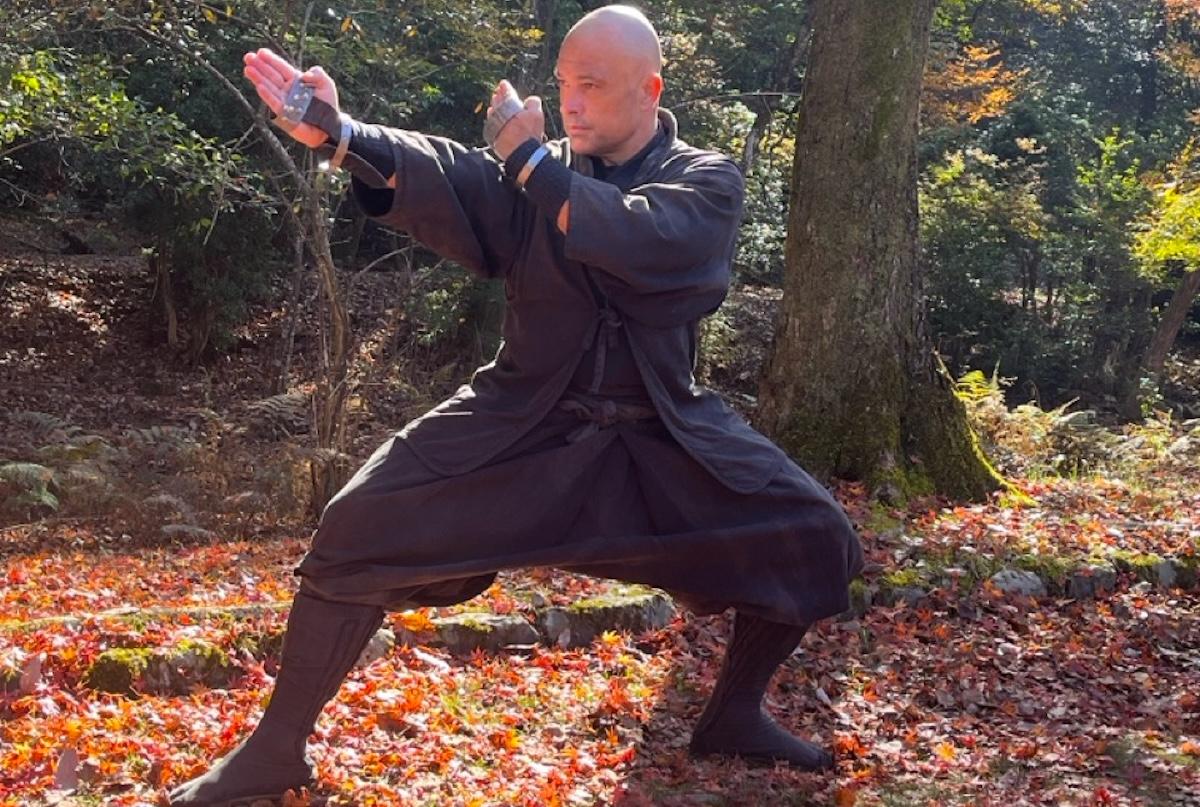A complete guide to understanding the essence of traditional Ninjutsu
Introduction
 The term Ninjutsu (忍術) evokes the legendary image of the ninja — a master of concealment, evasion, and strategy. But beyond popular myths, what is the true essence of Ninjutsu?
The term Ninjutsu (忍術) evokes the legendary image of the ninja — a master of concealment, evasion, and strategy. But beyond popular myths, what is the true essence of Ninjutsu?
This guide offers a deep dive into the etymology, history, and philosophy of this ancestral martial art, still alive today through schools such as Togakure Ryū Ninpō (戸隠流忍法).
Far more than just a set of combat techniques, Ninjutsu is a path of inner transformation. It teaches adaptability, self-mastery, the ability to read surrounding energies, and strategic discretion in the face of adversity. Born in the remote mountains of feudal Japan, it was shaped by centuries of persecution, resistance, and close observation of the natural world.
When practiced with sincerity, Ninjutsu becomes a way of spiritual resilience, martial wisdom, and harmonization with nature. It is a discipline of the unseen — one that moves without sound, whose strength lies in self-awareness, in sensing danger, and in knowing the right moment to act… or to vanish.
I. Etymology of the word 忍術 (Ninjutsu)
The word Ninjutsu (忍術) is composed of two essential kanji characters that reveal the depth of this martial art:
• 忍 (Nin) — meaning “perseverance”, “endurance”, “to conceal”, or “to silently endure”. It can also be read as Shinobu (しのぶ).
• 術 (Jutsu) — meaning “art”, “technique”, or “method”.
The kanji 忍 (Nin) itself is a combination of two distinct elements, both rich in symbolism:
• 刃 / 刀 (Katana) — the blade of the sword, symbolizing danger or threat,
• 心 (Kokoro) — the heart, the spirit, the center of emotions.
Together, they express the powerful image of a calm and controlled heart beneath the threat of the blade. This represents the core principle of the ninja’s strength: not brute force, but inner mastery, emotional control, and the ability to remain invisible, silent, and fully aware.
The 忍 kanji embodies an entire way of being — to endure hardships, to remain calm under pressure, to act with restraint, and to strike at the precise moment. From its very roots, Ninjutsu is a path of patience, wisdom, and spiritual resilience.
II. A Discipline Beyond Combat
Ninjutsu is not merely a martial art — it is, above all, a path of survival, a science of the body, mind, and environment developed to face the unexpected. While other disciplines focus on direct confrontation or duels, Ninjutsu teaches avoidance, adaptation, and the intelligence of evasion.
Its techniques cover a wide range of skills, including:
• silent movement (shinobi-ashi 忍び足),
• camouflage using shadows and natural elements,
• disguise and infiltration,
• espionage, observation, and memorization of terrain,
• escape route planning,
• and the ability to anticipate danger and survive in hostile environments.
Yet beyond these practical skills, Ninjutsu cultivates an inner attitude:
“See without being seen. Sense before it happens. Act without leaving a trace.”
The practitioner of Ninjutsu develops heightened awareness — the ability to read an enemy’s intent, to feel the shift in the wind, or to sense subtle tensions in a room. The goal is not confrontation, but a strategic understanding of the present moment, allowing one to act with precision — often invisibly.
This level of awareness is rooted in the discipline of 忍 (nin) —
to endure, to observe, to remain patient.
Training in Ninjutsu integrates:
• physical aspects (flexibility, breath, coordination),
• mental qualities (calmness, adaptability, perception),
• and spiritual grounding (self-mastery, inner invisibility, connection to the elements).
In this sense, Ninjutsu is a non-dual martial art — it teaches not only how to win a fight, but more importantly, how to avoid it… and still prevail.
III. Historical Origins of Ninjutsu
Ninjutsu originated in the remote mountain regions of Iga (伊賀) and Kōga (甲賀), now located in modern-day Mie and Shiga prefectures. These forested areas, ideal for stealth and survival, gave rise to the earliest forms of what was called Shinobi-no-jutsu (忍びの術) — “the art of silent endurance.”
During the Kamakura (1185–1333) and Sengoku (1467–1603) periods, amidst civil war, autonomous clans developed unique strategies of espionage, resistance, and survival. In contrast to the rigid code of Bushidō, shinobi emphasized adaptability, efficiency, and discretion.
Mastery of terrain, use of camouflage and hidden tools, and observational intelligence made the ninja effective scouts, saboteurs, and infiltrators.
Historical figures such as Tokugawa Ieyasu employed shinobi for covert operations. After Japan’s unification, some were absorbed into official networks, while others preserved their traditions through secret schools such as Togakure Ryū, Gyokushin Ryū, and Kumogakure Ryū.
IV. Major Schools of Ninjutsu
Ninjutsu is composed of various traditional ryūha (流派), or schools, each with its own techniques and philosophy. Here are the three main historical lineages:
1. Togakure Ryū 戸隠流
Founded in the 12th century by Daisuke Nishina, this school emphasizes:
- fluid movement (taihenjutsu),
- evasion over direct confrontation,
- spatial awareness and intuition,
- and deep spiritual practice rooted in Mikkyo esoteric Buddhism.
2. Kōga Ryū 甲賀流
Renowned for its expertise in:
- natural medicine and poisons,
- long-term espionage and infiltration,
- strict family-based transmission,
- and coordinated group tactics.
3. Iga Ryū 伊賀流
Often considered the root school of Ninjutsu, Iga Ryū was known for:
- terrain mastery and stealth,
- use of hidden tools (shuriken, grappling hooks…),
- and high-level political strategy.
These schools are preserved today through organizations such as the Bujinkan, which transmits nine ancient martial traditions, including three Ninjutsu schools.
V. Spiritual and Philosophical Values of Ninjutsu
Ninjutsu is more than combat — it is a spiritual path that integrates body, mind, and breath. It draws from Mikkyo, Shugendō, and Zen traditions.
1. 忍 – Endurance
The character 忍 (nin) symbolizes the ability to remain calm under threat. It teaches emotional mastery, patience, and adaptability in all situations.
2. Inner Invisibility
True invisibility goes beyond the physical. The ninja learns to dissolve the ego, becoming imperceptible, like wind passing through trees.
3. Esoteric Practice
Mantra, mudrā, visualization — these tools align the ninja with universal energy, developing mental clarity and hidden inner power (nairiki).
4. Connection to Nature
The shinobi lives in harmony with nature, understanding lunar cycles, plants, and seasonal rhythms. This sensitivity sharpens instinct and intuition.
5. A Path to Awakening
Ninjutsu is a quiet path toward awakening. It reveals strength in stillness, clarity in silence, and a way to protect without ego.
VI. Ninjutsu Today: Between Tradition and Modernity
In our modern world, Ninjutsu offers silent grounding — a way to stay centered and aware.
1. A Living Art
Modern practitioners develop:
- a responsive, agile body,
- strategic awareness,
- and a calm mind rooted in presence.
2. A Global Transmission
Thanks to masters like Hatsumi Masaaki and instructors such as Jérôme Pailliette in Kyoto, Ninjutsu is shared globally, remaining faithful to its origins while meeting the needs of modern seekers.
3. Authenticity in the Digital Age
Today’s ninja avoids spectacle and seeks depth. Ninjutsu teaches us that discretion is strength, and that the most powerful action is often the quietest.
VII. Conclusion – The Path of the Shinobi, Now More Than Ever
Ninjutsu is a compass for the modern world. It reminds us:
- true strength is born of stillness,
- discretion can be a form of wisdom,
- and those who master the unseen shape the visible.
To you who walk this path: move without fear, observe without judgment, protect in silence.
The true ninja is not the one who hides,
but the one you never see coming.
 The term Ninjutsu (忍術) evokes the legendary image of the ninja — a master of concealment, evasion, and strategy. But beyond popular myths, what is the true essence of Ninjutsu?
The term Ninjutsu (忍術) evokes the legendary image of the ninja — a master of concealment, evasion, and strategy. But beyond popular myths, what is the true essence of Ninjutsu?




